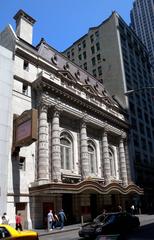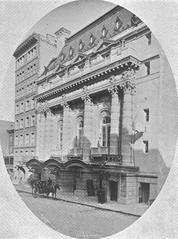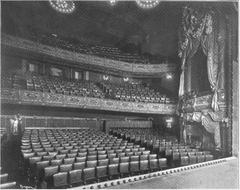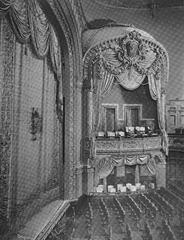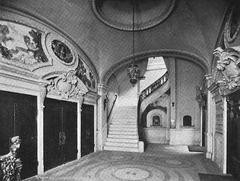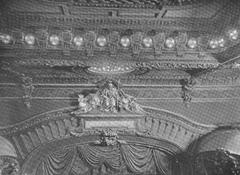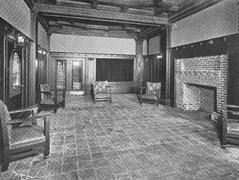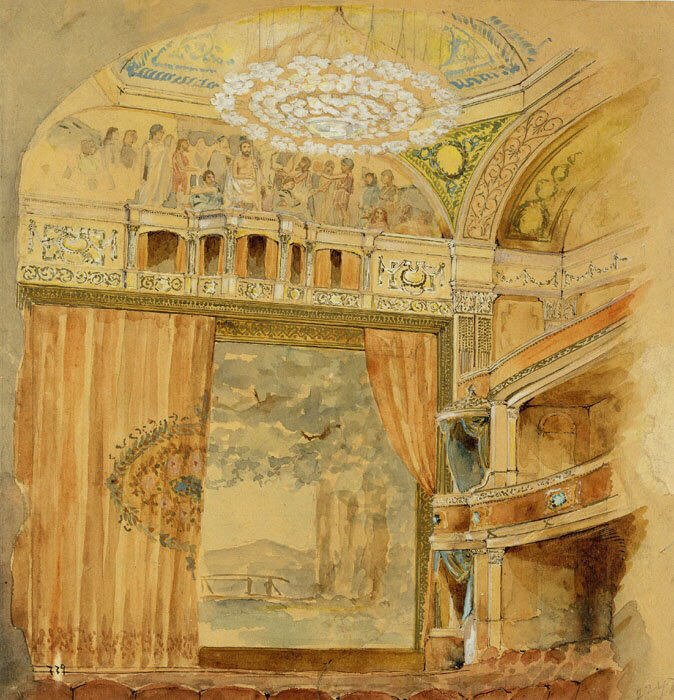
Lyceum Theatre New York City: Visiting Hours, Tickets, and Historical Significance
Date: 14/06/2025
Introduction to the Lyceum Theatre in New York City
Nestled in the heart of Manhattan’s Theater District, the Lyceum Theatre stands as a beacon of Broadway’s rich history and architectural grandeur. Established in 1903, it is New York City’s oldest continuously operating legitimate Broadway theater. Commissioned by impresario Daniel Frohman and designed by the esteemed firm Herts & Tallant, the Lyceum is a prime example of Beaux-Arts design, boasting a grand limestone façade adorned with Corinthian columns and intricate carvings reminiscent of classical antiquity (Wikipedia; Classic New York History).
Beyond its architectural splendor, the Lyceum has played a significant cultural role on Broadway for over a century. Landmark productions, including “The Gold Diggers,” “Born Yesterday,” and “As Is,” have graced its stage, with the latter notably advancing LGBTQ+ visibility in theater (NYC LGBT Sites). Its intimate auditorium, seating approximately 924 patrons across three levels, provides audiences with an exceptional theatrical experience in a refined yet comfortable setting (Headout).
Thanks to its accessible facilities and central location—steps from Times Square and major attractions such as Bryant Park and the Museum of Modern Art—the Lyceum continues to attract both local and international visitors (Wikipedia). For up-to-date visiting hours, ticket options, and information on special guided tours, the official Lyceum Theatre website is your best resource.
Table of Contents
- Origins and Early Years (1903–1939)
- Architectural Significance
- Ownership and Management Transitions
- Landmark Productions and Cultural Impact
- Visiting the Lyceum Theatre
- Preservation and Modern Use
- The Lyceum in the Broadway Landscape
- Frequently Asked Questions (FAQ)
- Conclusion
- References and Further Reading
Origins and Early Years (1903–1939)
The Lyceum Theatre, at 149 West 45th Street, opened in 1903 and quickly established itself as a Broadway mainstay (Wikipedia). Daniel Frohman’s vision, executed by Herts & Tallant, paid homage to the ancient Athenian Lyceum, echoing the intellectual and artistic spirit of Aristotle’s school. The building’s construction, at a cost of $250,000, played a pivotal role in developing the area north of 42nd Street as the heart of New York’s Theater District (Classic New York History). The theater’s capacity of just under 1,000 seats offered both intimacy and comfort, with Frohman’s personal apartment above the orchestra—a unique touch allowing him to oversee productions privately (BroadwayWorld).
Architectural Significance
The Lyceum’s Beaux-Arts architecture is highlighted by its gray limestone façade, six Corinthian columns, and three grand arched windows (Classic New York History). Stone faces and decorative motifs further enhance its distinctive character. Inside, grand marble staircases, a domed lobby ceiling with murals, and advanced early 20th-century ventilation reflect the era’s commitment to both beauty and innovation (BroadwayWorld). Both the exterior and interior have official New York City Landmark status, protecting their historic integrity (NYC Landmarks Preservation Commission PDF).
Ownership and Management Transitions
Daniel Frohman managed the Lyceum until 1939, after which producers like David Belasco leased the venue (Classic New York History). Ownership shifted in 1940 to a group including George S. Kaufman and Moss Hart. Since 1950, the Shubert Organization has owned and operated the Lyceum, ensuring its continued operation and preservation (BroadwayWorld; Shubert Organization).
Landmark Productions and Cultural Impact
The Lyceum has been the site of numerous landmark productions, including “The Gold Diggers” (1919–1921), “Born Yesterday” (1946–1948), and “As Is” (1985), the latter making significant contributions to LGBTQ+ representation (NYC LGBT Sites). The theater has also hosted companies such as the Phoenix Theatre and Tony Randall’s National Actors Theatre, and houses the Shubert Archive—a treasure trove for theater historians (Ovrtur).
Visiting the Lyceum Theatre
Visiting Hours and Ticket Information
The Lyceum Theatre typically opens one hour before scheduled performances. Evening shows and select matinees are the standard, with box office hours adjusted accordingly. For current schedules and to purchase tickets, visit the official Lyceum Theatre website. Tickets can be purchased online, at the box office, or via authorized vendors. Early booking is recommended for popular productions (Headout).
Accessibility
The Lyceum Theatre has been modernized to ensure accessibility. Step-free access is available at the main entrance, with wheelchair and companion seating located on the Orchestra level. Transfer seats with folding armrests are also available. The Mezzanine and Balcony require stairs and are not wheelchair accessible. An accessible restroom is available on the ground floor. Assistive listening devices can be requested, and guide dogs are welcome (Broadway Show Tickets; Shubert Organization).
Travel Tips and Nearby Attractions
Located at 149 West 45th Street, the Lyceum is easily accessible by subway—just a short walk from the Times Square–42nd Street station. Buses and nearby parking garages provide additional options. The theater is surrounded by notable attractions, including Bryant Park, the Museum of Modern Art, and other historic theaters like the New Amsterdam and Hudson Theatres (Wikipedia).
Special Events and Guided Tours
While regular public tours are not available, special guided tours and educational events occasionally occur. Check the official website or local historic listings for announcements on these unique opportunities.
Preservation and Modern Use
Landmark protection has preserved the Lyceum’s architectural and historic integrity amid New York’s ever-changing landscape. Its size and acoustics make it ideal for dramas and smaller musicals (Headout). The upper floors house the Shubert Archive, further securing its place as a hub of theatrical history (Ovrtur). After a temporary closure due to the COVID-19 pandemic, the Lyceum reopened in October 2021 and continues to host diverse productions (Classic New York History).
The Lyceum in the Broadway Landscape
As one of only three early 1900s Broadway theaters still in operation, alongside the Hudson and New Amsterdam, the Lyceum is a cornerstone of the Theater District (Headout). Its refined Beaux-Arts design and storied past make it a destination for both theater lovers and architecture aficionados.
Frequently Asked Questions (FAQ)
What are the Lyceum Theatre visiting hours?
The Lyceum operates primarily during showtimes, opening about an hour before performances. Check the official website for precise schedules.
How can I purchase tickets?
Tickets can be bought online through the official website, at the box office, or via authorized vendors.
Is the theater accessible?
Yes. The main entrance and Orchestra level are step-free. Accessible seating and restrooms are available. The Mezzanine and Balcony are not accessible by wheelchair.
Are assistive listening devices available?
Yes, these can be requested in advance or at the theater.
Are guided tours available?
Tours are not regularly offered but may occur during special events. Check the official website for updates.
What attractions are nearby?
The Lyceum is close to Times Square, Bryant Park, the Museum of Modern Art, and several other historic theaters.
Conclusion
The Lyceum Theatre is more than a Broadway venue—it is a living monument to New York City’s theatrical and architectural heritage. Its Beaux-Arts beauty, historical significance, and ongoing role in Broadway’s cultural life make it a must-visit destination. With accessible facilities, an unbeatable Midtown location, and a legacy of landmark productions, the Lyceum offers an unforgettable experience for visitors and theatergoers alike. For the most current information on shows, visiting hours, and tickets, visit the official Lyceum Theatre website.
Plan your visit, explore additional New York historical sites, and immerse yourself in the magic of Broadway’s past and present at the Lyceum Theatre.
References and Further Reading
- Lyceum Theatre (Broadway), 2024, Wikipedia (Wikipedia)
- History of the Lyceum Theatre on Broadway, Classic New York History (Classic New York History)
- Lyceum Theatre - BroadwayWorld (BroadwayWorld)
- Lyceum Theatre - Headout Blog, 2024 (Headout)
- Lyceum Theatre NYC Architectural Highlights, Historic Districts Council (HDC)
- New York City Landmarks Preservation Commission PDF on Lyceum Theatre (NYC Landmarks Preservation Commission PDF)
- NYC LGBT Historic Sites: Lyceum Theater (NYC LGBT Sites)
- Ovrtur: Lyceum Theatre Venue Information (Ovrtur)
- Shubert Organization Official Lyceum Theatre Page (Shubert Organization)
- SeatPlan Lyceum Theatre Seating and Architecture (SeatPlan)
- Broadway Show Tickets - Lyceum Theatre (Broadway Show Tickets)
For more on Broadway history and visiting tips, explore our related guides and download the Audiala app for seamless ticketing and exclusive content.



